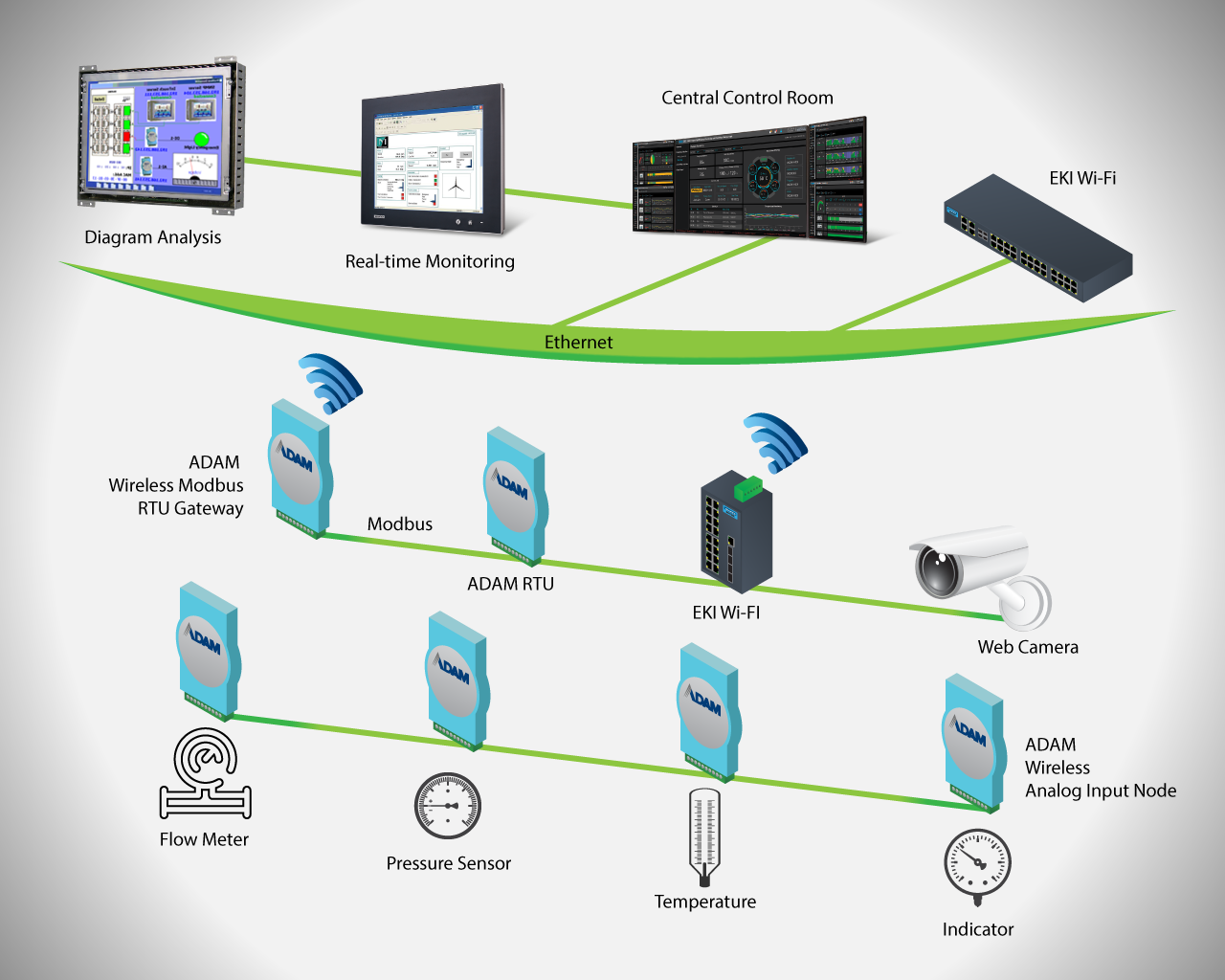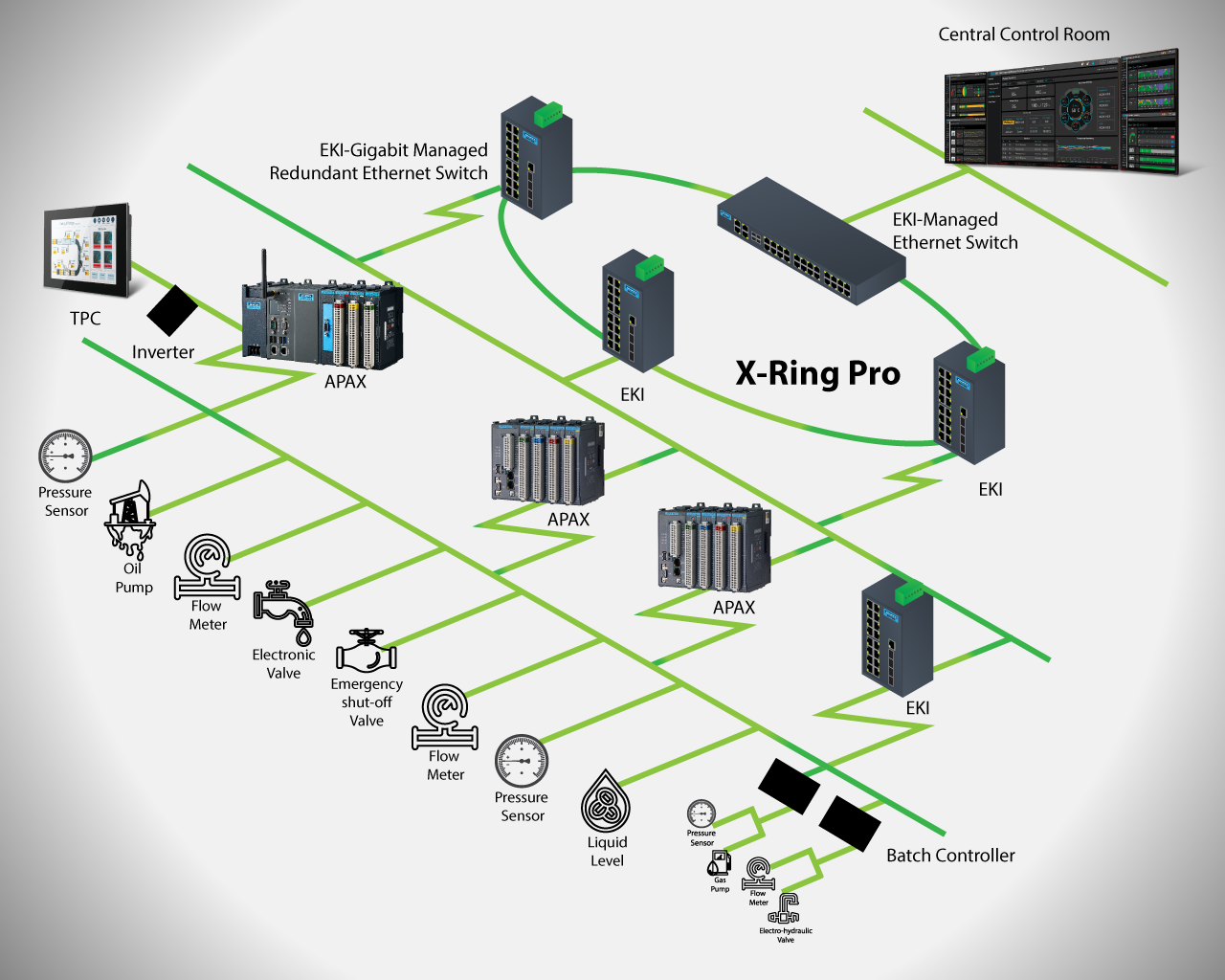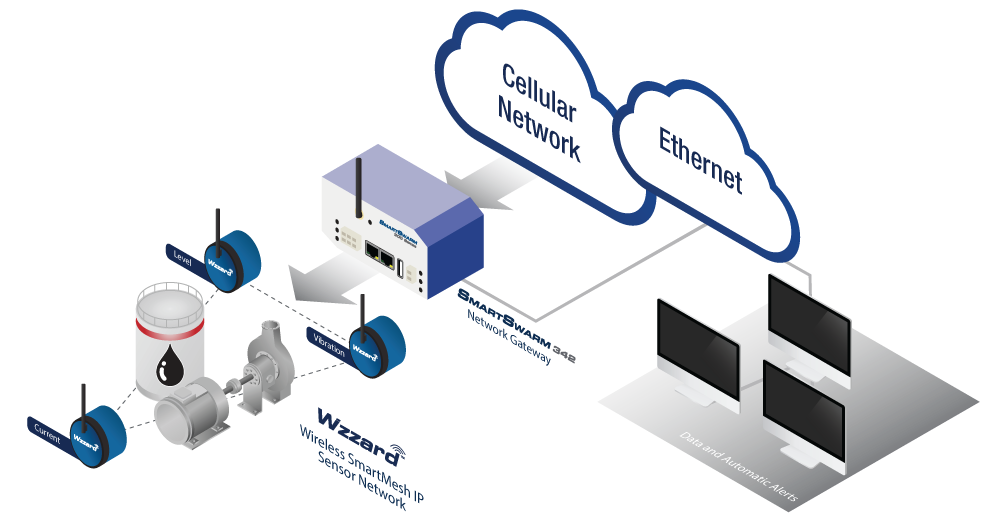From human machine interface (HMI), embedded automation computers, I/O modules, network gateways, Ethernet switches and more, Advantech offers C1D2-certified solutions to help your organization meet hazardous location needs. Advantech leverages more than 30 years of experience in the industrial automation industry and a strategic technology partner network for designing different products and solutions. With Advantech, you get reliable, rugged solutions for hazardous locations.
CLASS 1, DIVISION 2 PRODUCT OFFERINGS
HAZARDOUS LOCATIONS AT A GLANCE
Occupational Safety and Health Administration (OSHA) Publication 3073 defines a hazardous location (HazLoc) as areas where flammable liquids, gases or vapors or combustible dusts exist in sufficient quantities to produce an explosion or fire. In hazardous locations, specially designed equipment and special installation techniques must be used to protect against the explosive and flammable potential of these substances.
Due to the safety concerns HazLoc areas pose, the National Electrical Code (NEC) and Canadian Electrical Code (CEC) have developed standards and outlined testing procedures for the equipment used in these areas to mitigate safety risks. These standards provide the needed level of safety HazLoc areas demand, but trying to navigate the subject matter alone can prove to be a daunting task. Here we highlight the standard’s critical aspects and what you need to know. You do not have to feel like you are alone when making decisions in electronic equipment in this complicated application area. Leverage the expertise of Advantech team members. Together, we go far!
CLASS/DIVISION STANDARD 101:
Standards categorize HazLoc areas into three classes (Class I, II, and III) and two divisions (Division I and II). The class identifies the properties of the substance and the division identifies the presence of a substance under operation conditions. Class I and II standards are further divided into 7 Groups: A, B, C, D, E, F, G, which identifies the specific material properties so further ‘protection concepts’ can be tested particular to the material property.
With advancements in edge-computing and sensing devices unlocking system optimization — something only high-processing power and software can do — major Class 1/Division 2 certification is needed for electronic equipment used in HazLoc areas.
Class 1 – Flammable gases, flammable liquid produced vapors, and combustible liquid produced vapors. Example: Natural Gas, Propane, Hydrogen, Methanol, etc.
Division 2 – Ignitable concentrations of flammable gases, flammable liquid-produced vapors, or combustible liquid-produces vapors that are not likely to exist under normal operating conditions.
APPLICATIONS AT A GLANCE

Oil fields typically span large geographical areas and in order to provide increased safety, system reliability, and lower overhead, stakeholders of these assets have begun to deploy IIoT systems to assist in day-to-day operations. This means establishing a “smarter” field to enable this technology, often a complicated logistical project to deploy. Leveraging Advantech as a strategic partner, complicated projects can be streamlined. One oil field stakeholder is able to monitor more than 800 well drill statuses across multiple oil fields in real time. With Advantech solutions, alerts are automatically sent to field technicians when the torque, voltage, current, or amp values exceed safe limits. It was achieved by connecting field asset sensors to an ADAM data-acquisition device that was then connected to an UNO-1372GH edge-computing platform to process the data feed. Data was then sent to a ruggedized monitor, FPM-8151H, where it was displayed locally for technician use. The entire system is connected through the networking layer with a GPRS modem using Advantech’s WebAccess interface, which allows the central control room monitor the well heads.

TANK STORAGE MONITORING

The Advantech team helped a partner enable a solution for remote monitoring of its fueling operation. The information and machine diagnostic data was collected at the individual system asset and transmitted back to the client’s offices and corporate headquarters. The monitoring system not only measured fuel volume, but the client also leveraged Advantech to assist in providing additional sensor data that was crucial to system operations. There were more than 400 liquefied natural gas storage facilities connected in the system. Most oil, fuel, or chemical tank storage units are in hazardous locations, which require constant monitoring of pressure, liquid levels, control valve position, and temperature. A SCADA-based system for real-time data collection and transmission is essential for plant and personnel safety.

MONITORING OIL & GAS EQUIPMENT WITH WIRELESS MESH SENSING

A major oil company was looking for a non-invasive way to monitor equipment in its terminals, such as large tanks, pumps and other outdoor equipment. The company needed to monitor tank conditions, pump status and additional equipment all with little disruption to existing process controls to maintain safety and avoid process downtime. To meet the challenges of the application, the company decided to utilize the Wzzard Wireless Mesh product family from Advantech. The wireless mesh solution provided a stable, wireless platform to connect sensors to an Advantech C1D2/ATEX certified SmartFlex Gateway. All Wzzard Industrial Nodes are rated C1D2 for hazardous locations, rated IP67 for outdoor use and UL listed. Advantech supplied current sensors, thermocouples and vibration sensors for monitoring condition of pumps, motors and gearboxes.


